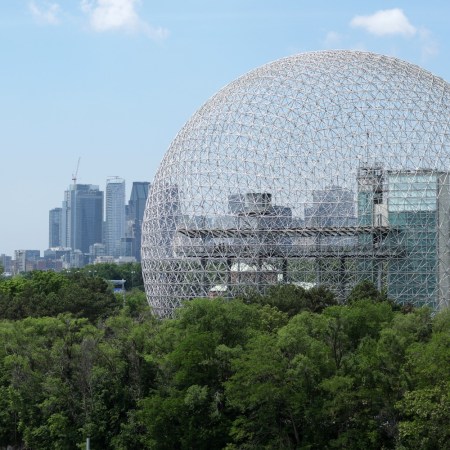The National Park Service is going to be fine.
You may have read that the U.S. Forest Service and National Park Service are auctioning off naming rights to 100 million acres of public land.
“Outrage!” “Heresy!” “Loud noises!”
But before you protest, look at history:
The United States National Parks Service has preserved American treasures since it was founded in 1916, by President Woodrow Wilson. It includes more than 411 areas covering around 84 million acres in every state, the District of Columbia, American Samoa, Guam, Puerto Rico and the Virgin Islands. In 2015, some 300 million visitors rolled through Park-protected land and monuments.
And while some 221,000 volunteers help operate them (versus 22,000 wage-earning employees), that kind of acreage doesn’t come cheap.
For most of its history, the Service has relied on donations from private citizens to pay for improvements and upkeep. But now they’re beginning to make aggressive appeals to corporations for funding — they call them “Philanthropic Partnerships.”
Why? Because of huge fiscal struggles. The agency’s budget has been cut by $190 million compared to four years ago, and its maintenance backlog is now at $11 billion and growing. They recently signed a $2.5 million marketing deal with Anheuser-Busch (“America!”) to help draw millennials to visit the sites.
And while the NPS won’t recognize donors with direct advertising, they will feature logos. I.e., there won’t be a Budweiser Visitor Center any time soon, but a visitor center funded by them might have logos on prominent display.
Most, like The Washington Post, are not happy. “You could use Old Faithful to pitch Viagra,” Jeff Ruch told them. He is the executive director of Public Employees for Environmental Responsibility, a watchdog group that’s trying to rally the park community to fight the plan.
But as the article points out, this practice is nothing new.
Yellowstone National Park, has teamed up with corporations like Toyota and ConocoPhillips to pay for crucial needs in the past. And the primary photographer of Yosemite — a certain Ansel Adams — actually appeared in a Datsun car ad in 1968 filmed at the park. Datsun funded a campaign that planted a tree for each time that someone test drove a car. The test drive also entitled you to an Ansel Adams poster. In the 1940s, the same photographer licensed his color images to Standard Oil (now Exxon). The company used it to anchor an advertising campaign called “See the West” and gave away thousands of postcards to lure in vacationers to America’s parks.
The famous, sweeping black-and-white images by which most Americans know Yosemite? Ads.
So put away the pitchforks.
The National Parks need money. Corporations need good press. As long as strong standards are maintained, it should mean a big financial victory for our most precious commodity.
This article was featured in the InsideHook newsletter. Sign up now.























